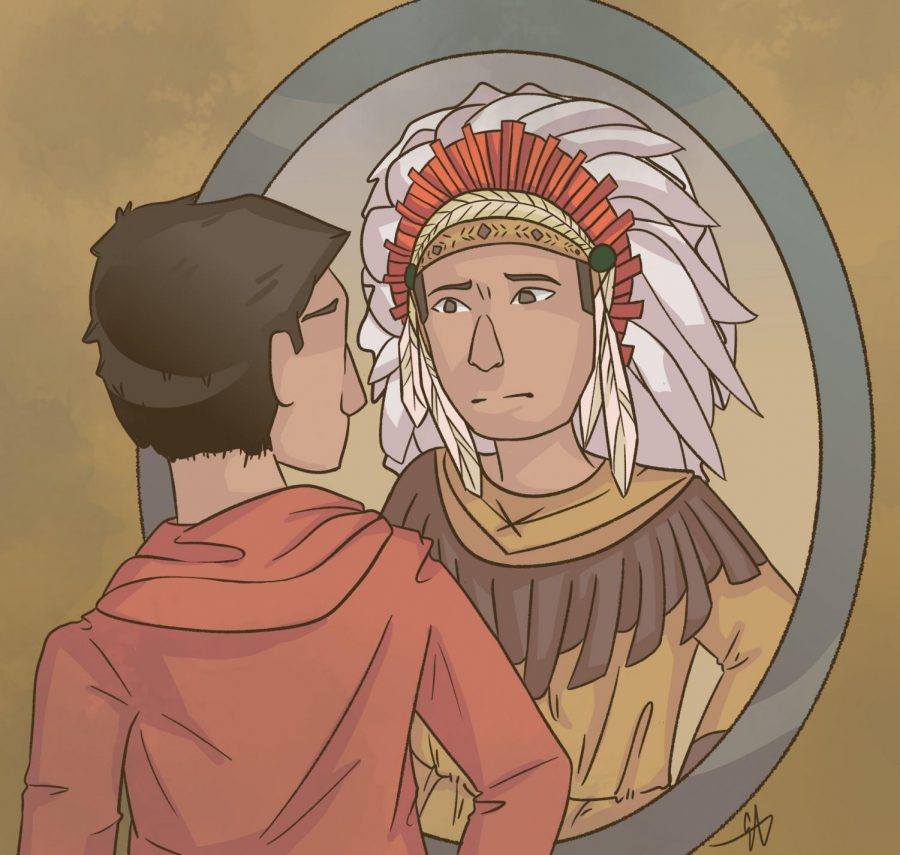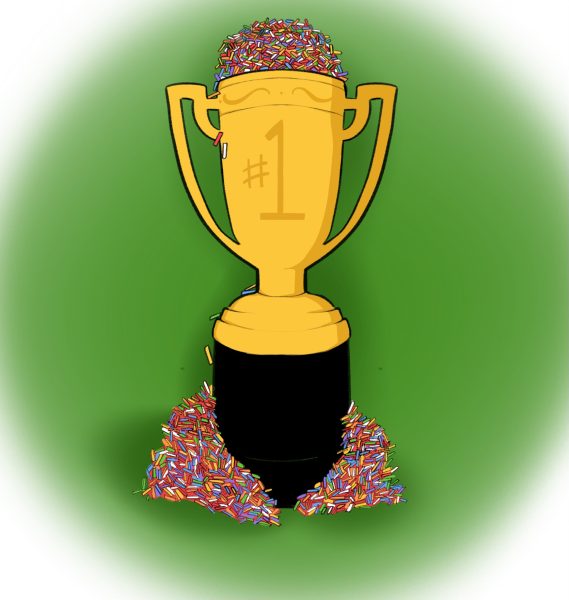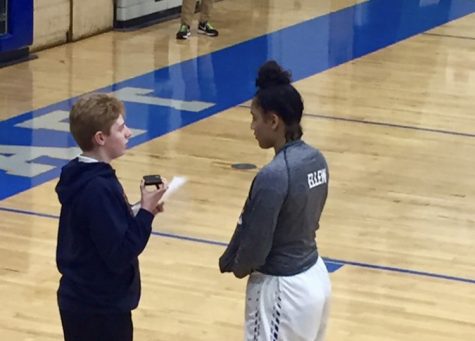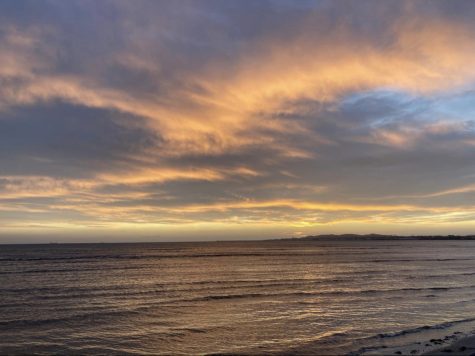The misrepresentation of Native Americans in… America
I still remember my first pep rally at Lane. It was 2012, I was in seventh grade and students wore headdresses to show their “school spirit.” I was disappointed with this being allowed by the school, and I felt like it was a misrepresentation and misunderstanding of my own Native American culture.
Since then, the school has been more strict on Spirit Day, in terms of prohibiting students from wearing headdresses, spears, bows and arrows out of respect for Native Americans.
Over the past year, Gym I got a new floor, replacing the Native American with the simple “LT” logo. However, many of the school’s sports teams such as the football, baseball and cross country teams still use the “Indian” branding on their websites, whether it be in the name of the team or in the logo.
While the school works toward change, they still hesitate to transition from the Indian, and instead keep it as a symbol for students to look up to.
National sports teams such as the Cleveland Indians and the Washington Redskins have always been in mind when it comes to Native American mascots.
The word “redskin” is often seen as a term used to disrespect Native Americans. Some even consider it a racial slur. Many people are unaware or inconsiderate of this meaning of the word and continue to use it in a lighthearted manner.
To me, this has always been offensive. I never understood why these corporations had the right to use a Native American as a mascot, why fans felt like they had the right to wear headdresses or why the public can’t see how disrespectful it can be.
Until recently, the Cleveland Indians have used a red-skinned “Indian” named Chief Wahoo as their mascot.
The mascot has offended me for as long as I can remember, and I would have expected a change years ago. Chief Wahoo was an insult and a misrepresentation of a Native American to me; it was a racist image depiction, and misled a lot of people into thinking that’s what Native Americans looked like.
After several years of using Chief Wahoo as their mascot, the Cleveland Indians have moved forward with changing the logo.
“Paul Dolan [owner of the Cleveland Indians] made clear that there are fans who have a longstanding attachment to the logo… Nonetheless, the club ultimately agreed with my position that the logo is no longer appropriate,” Rob Manfred, Commissioner of Major League Baseball said in an interview with TribeVibe.
With this change, there will be backlash from fans with an attachment to the logo. This reminded me of some wanting to keep the mascot of the Indian, and how they feel about Lane removing the logo, ruining a “tradition.”
Some in favor of the mascot may argue that the Indian has a stronger meaning to it, saying they can connect their moral values to those of Native Americans. They continue to say that the Indian is respecting Native Americans and their culture and honors their beliefs.
However, this so-called symbol of honor can’t just be something students can claim. Students can’t say that it’s their symbol of honor just because it demonstrates their beliefs or morals — It’s not a symbol that they have any relation or connection to.
The symbol of honor is something that students have been attached to, and is something that they’re taking as their own, when it’s really a figure for me and other Native Americans. I never saw it being their choice in the end; with the “tradition” of Lane being honor, and for me, that shouldn’t be portrayed in the form of a Native American.
I see that the Indian is probably what these students remember from Lane, and is a symbol of school spirit, and they don’t want to leave that mascot that they remember so well.
However, in the student planner, it refers to the logo of the Indian as a “Native American” and says that it’s the school’s “symbol of honor.”
To me, the “symbol of honor” has been nothing more than a mascot for students to see. Some students are welcome to see a change, while others take offense to removing the Native American. I saw this recently with the change to the floor in Gym I; students on social media reacted in different ways, some being offended, and some were welcoming to this change.
At the same time, I haven’t met another Native American at Lane, and was never able to share my distaste for the “symbol of honor” with anyone that would have also taken personal offense.
In recent years, I’ve noticed that the school’s Native American club has given out foods such as popcorn and animal crackers during International Days.
A famous food within Native culture is frybread, a fried piece of flat dough. I was kind of surprised that it wasn’t there because every Native American I’ve known loves this food, and at Indian Summer, an event held in Milwaukee, nearly every food cart served frybread.
Last year was the first year I got to see them perform, and I was surprised to not see a more traditional dance I was used to seeing. Considering that a pow wow is a large part of the culture, I expected to see a traditional dance that I would’ve seen if I were at a pow wow.
Because of this, I took it upon myself to see their reasoning and point of view for these choices.
“I watch a lot of videos of pow wows from different tribes and different dances from across the country, and I try to take general movements,” president of Native American club, Millie Rodriguez, Div. 852 said. She also mentioned that she’s part of the Choctaw tribe.
Earlier, Rodriguez stated that the club tries not to do anything that would represent a single tribe, because everything for I-Days would need to focus on that one tribe. This made sense to me, because I was aware of the diversity within Native American culture and how several tribes have unique dances and practices.
Seeing this, it’s obvious that the school is cautious with how culture is presented, and that it’s important for cultures to be respected. However, the school still refuses to get rid of the Indian.
As for the term “Indian,” Rodriguez thinks that referring to Native Americans as “Indians” is offensive.
“I know people have been talking about making the mascot “the Warrior” and I even think that’s better. It’s not like an animal or anything, but at least it’s not the Indians. Which is in itself offensive,” Rodriguez said. While there’s nothing confirming this, it’s still something that’s discussed.
Within the Native American community, most find that Native American and American Indian is the most appropriate way to address the ethnicity.
I’ve seen my culture, my ancestors, be misrepresented outside of sports too. In the Disney movie Peter Pan, a Native American chief was portrayed in the form of a large, red man.
The movie had a song for this scene, titled “What Made the Red Man Red,” which had a group/tribe of Native Americans performing a stereotypical dance.
I remember being in grade school, around fourth or fifth grade, and seeing one of my classmates dressed as a Native American for Halloween. The classmate wore moccasins, a dress that resembled a Native American design, and wore a headband with a feather in her hair.
My grade school didn’t do anything against it, and I didn’t really know how to feel at the time. The argument could be made that they were kids, but this doesn’t justify anything. A “kid” is usually told when they do something inappropriate, and with this costume not being considered inappropriate, it made me think about how kids are taught about Native Americans.
Throughout all my years of grade school and high school combined, I’ve been taught about Native Americans no more than three times. So I could see where people would be misled, and start to make false assumptions. But these people weren’t only kids — the adults were clueless too.
Being a Native American at Lane has opened my eyes to how other people view my culture. The mascot made me realize a problem that went on outside of Lane with “Indian” mascots, and it made me want to call for a continued change not only with the school, but also nationally.
To me, this change starts with removing the Indian, but with also explaining why the decision to remove the Indian was made. At least with that, they can sway more people towards the change.
Another important part is teaching students about Native American culture, and teaching it accurately. It’s an important part of American history, and students should be taught about how they were treated, and why they’re in the position they are today.
Your donations directly fund the Lane Tech student journalism program—covering essential costs like website hosting and technology not supported by our school or district. Your generosity empowers our student reporters to investigate, write, and publish impactful stories that matter to our school community.
This website is more than a publishing platform—it's an archive, a research tool, and a source of truth. Every dollar helps us preserve and grow this resource so future students can learn from and build on the work being done today.
Thank you for supporting the next generation of journalists at Lane Tech College Prep!
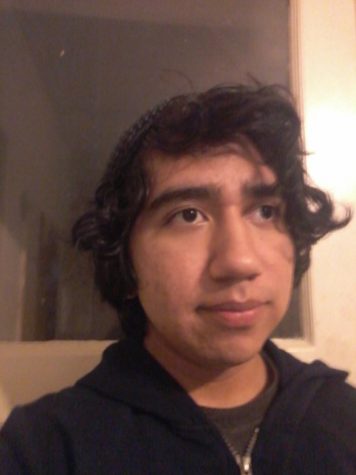
Gilbert Marin is in his junior year at Lane. He took journalism as an opportunity to voice his opinion to his peers and community. Gilbert has an interest...

